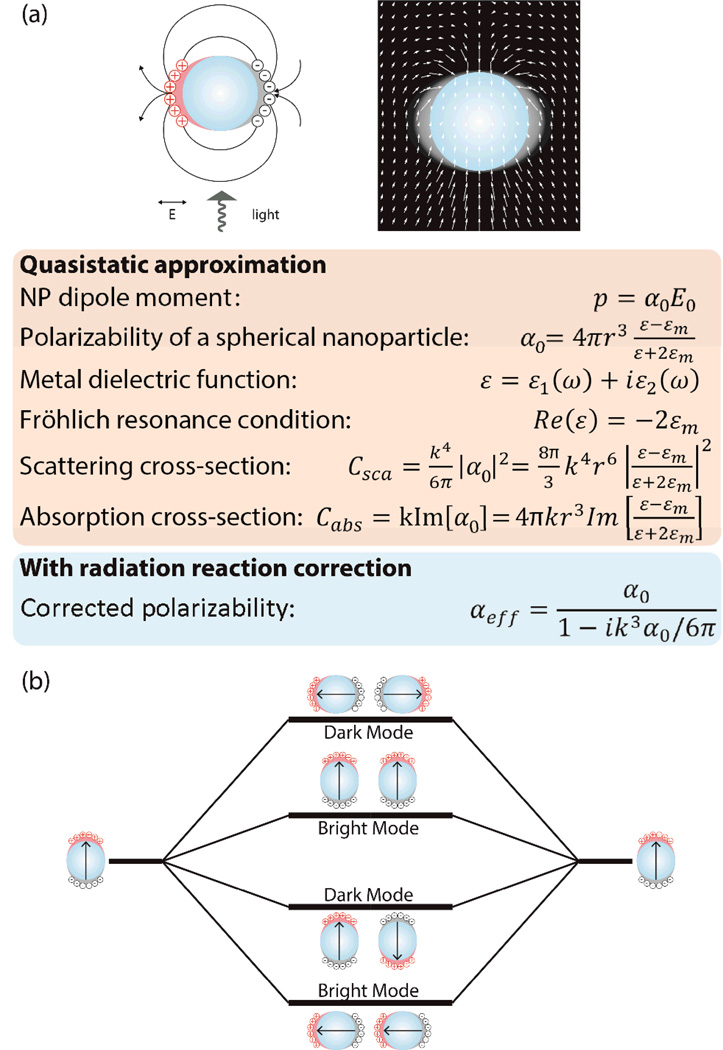Figure 1.
a) Left: Light incident onto a metal NP creates charge density oscillations on the surface. Right: A plot of the optical powerflow around a noble metal NP at the LSPR frequency shows a rerouting of the incident light towards the NP. Red box: key formulas determining the resonance behavior of the metal NP in the quasistatic approximation (wavenumber k = 2π/λ; εm: dielectric constant of ambient medium). Blue box: corrected effective polarizability including radiation reaction. Adapted with permission from Boriskina and Reinhard Nanoscale, 4, 76 (2012). Copyright 2012 The Royal Society of Chemistry. b) Plasmon hybridization between strongly coupled NPs leads to formation of dark and bright modes, depending on the relative orientation of the NP dipoles (indicated as arrow).

